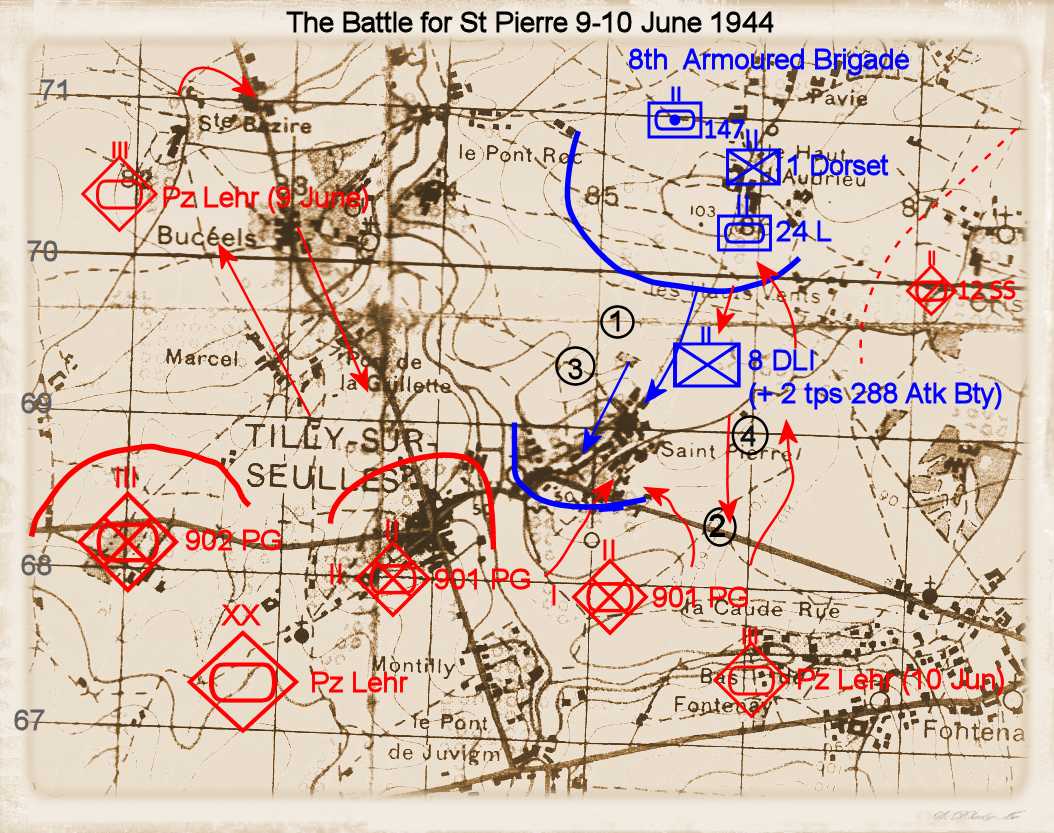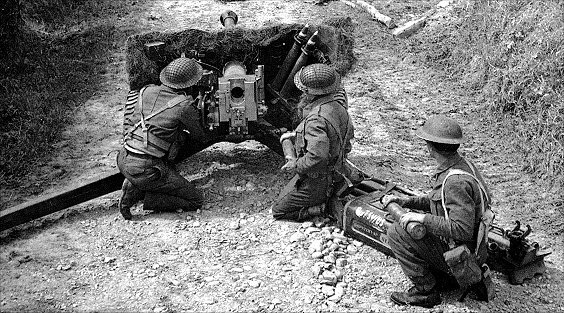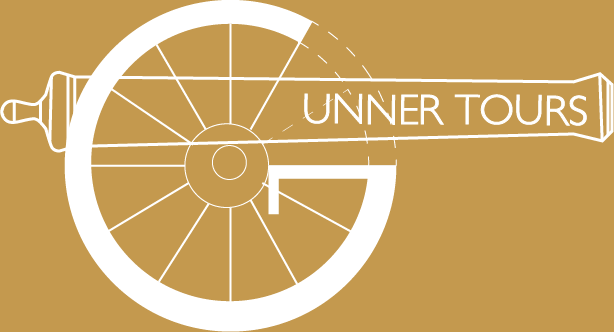The climax of the film “Saving Private Ryan” is set in a village in Normandy, a few days after D Day. A small group of American paratroops are under attack from all directions by German heavy tanks, and are saved by an air attack. Saving Private Ryan is fiction. However, on 9-10th June, four days after D Day, in true life, a similar drama took place in the village of St Pierre separated by the river Seulles from the town of Tilly Sur Seulles.
On 8th June the 8th Armoured Brigade seized the high ground North of St Pierre, Point 103 in a rapid move. The reason for the significance of Point 103 is that it gives good visibility to the South, despite the hedges of the bocage country. This move coincided with the attack North by the Panzer Lehr division, the best equipped of the German Panzer divisions. This formation had 250 tanks and assault guns and could mount all its infantry in the 635 armoured half track APCs it possessed. Over the next five days the fighting would rage around St Pierre and point 103.

During the evening of 9th the 8th Battalion Durham Light Infantry, supported by the 24th Lancers and 147 Field Regiment captured St Pierre where they were joined by two troops of 288 Anti Tank Battery equipped with 6 Pdr guns. The route to St Pierre South from Point 103 was over bare slopes and the troops in the village were subject to attacks from three sides.
On 10th June the Germans attacked St Pierre shortly after first light at 0700 hours. This was beaten off by 8 DLI with the support of 24 L and 147 Fd Regt. St Pierre was partially overrun, one of the FOO’s Lt Sayer, was killed and Maj C H Gosling, BC 511 Bty and three other FOOs were wounded. The tanks of the 24 Lancers withdrew up to Point 103 to take up hull down positions.
288 ATk Bty’s guns withdrew, some of the gunners fighting on as infantry. When ordered to withdraw by the infantry company which they were supporting Sgt Down (1), from Ashington Northumberland, refused to leave his gun as “his duty was to kill tanks”. Keeping LBdr Gilmour, his layer, with him, he sent the rest of his detachment back and then proceeded to knock out the only tank that appeared on his front, for which he was awarded the Distinguished Conduct Medal (DCM) and LBdr Gilmour the Military medal (MM). The citation to Sgt Down’s DCM states that his courage and example helped to restore the confidence of the infantry at a critical moment, enabling them to re-establish their position. Later the same day Sgt Down was ordered to take his gun forward and destroy an enemy armoured SP gun. He appears to have carried out a recce on foot then manoeuvred his gun forward unseen and destroyed the enemy. Sgt Down had already made his mark as an aggressive soldier by undertaking several patrols hunting snipers on the night of the 8th June. The next day an enemy tank closed into a covered position where it could not be engaged by Sgt Down’s 6 Pdr. He then stalked the tank with a hand held PIAT and hit it at 30 yards range forcing it to withdraw. (2)
On the other side of the village, Sgt Seaton had to move his gun forward to engage the tanks that were troubling him and after being wounded, had to leave his gun; but he and his layer, Gnr Beresford, later returned to the gun and hit a tank which stopped firing then withdrew; they were both awarded the MM, as was Bdr Hinder who knocked out one tank and forced another to withdraw.(3)
Throughout, Lt Brameld, the troop commander had remained forward, giving advance warning of the approach of tanks. At one point Brameld found that there were enemy tanks out of range of his 6 pdrs. He borrowed a 17pdr Sherman from a neighbouring armoured regiment and directed its fire from outside the tank whilst under small arms fire, until at least one and possibly two enemy tanks were destroyed. For this action he was awarded the Distinguished Service Order (DSO). (4) At 1130 hrs, to prevent the counter-attack being resumed, 147 Fd Regt surrounded St Pierre with defensive fire, while Air OPs directed the fire of HMS Orion and Argonaut on to targets in the area Tilly-Juvigny-Fontenay-le-Pesnel and fighter-bombers attacked German reinforcements moving towards Tilly.

Later the same day 10 June the Panzer Lehr division launched an armuored attack on point 103, leaving 8 DLI surrounded in St Pierre and engaged the battalion from the North before returning South. The fighting stabilised with the British holding St Pierre and the Germans holding Tilly with the river Seulles dividing the armies.
Unteroffizier Petrov of the Panzer Lehr Division described the effect of the artillery fire: “Early this morning we put in our attack. We had three SP guns under command. We attacked a village … as soon as we got beyond the village the artillery opened up and I’ll say there was some confusion. Oh, that certainly was not much fun … Then came a counter-attack by the English … After a long search we found our vehicles but the enemy planes found us and the artillery fire came down on us again. We proceeded in short bounds to Regimental Headquarters and await further orders … Shall I have to go forward again? Thank God we are staying here overnight.” (5)
The story of the anti tank gunners at St Pierre is largely missing from accounts of the battle of Normandy. The fighting around St Pierre is one of the battles covered in the battlefield studies undertaken by the Cadets at the Royal Military Academy Sandhurst, but the anti tank gunners have not formed part of the story. They aren’t in the history of 8 DLI. They aren’t even in the war diaries of 8 DLI or 102 Anti Tank Regiment, which illustrates the fallibility of war diaries. The author of the cabinet history of the Normandy campaign (CAB 44/246)collated from war diaries refers to the uncertainty about the identity of the anti tank battery in support of 8 DLI only mentioned as 288 battery in the 8th Armoured Brigade War Diaries. The citations for the awards for Lt Bramald, Sgts Down and Seaton, Bdr Hinder, LBdr Gilmour and Gnr Beresford were all recommended by the CO 102 Atk Regiment commanders and supported by the CRA 50 Div, and approved by the GOC 50 Div and Corps commander.
There is a need for the story of the anti tank gunners to be told properly. There has been an academic debate about the proportion of anti tank gunners and their role started by the paper by Dr John Peaty entitled “Ubiquitous and Unnecessary? Anti-tank and anti-aircraft artillery in the NW Europe campaign.(6) That is a question which is loaded in the absence of a proper account of their contribution.
The action at St Pierre was controversial. Brigadier James Hargest, the New Zealand observer to 21 Army Group, wrote a report before his death in action in August1944 which was very critical of the British infantry. He wrote that 8DLI ran away and ther village had to be retaken. The report is heavily quoted by Carlo ‘Este and Max Nastings in their books on the Normandy campaign. It is obvious from the citations that there was an unauthorised withdrawal by some infantry, and this would have been known by the divisional and corps commanders. This does not mean that the story in the DLI Regimental history wrong, merely that it isn’t the whole truth. The fact that some infantry ran, does not detract from the deeds of those who stayed to fight or counter attacked. 8 DLI took nearly 200 casualties in the battle. Eight MMs and an MC were awarded to the battalion for this action..
This article arose from research undertaken to complete the Official History of the Royal Artillery in the Normandy Campaign started by the late Major Will Townend.
If you would like to visit the site of this battle or other places and hear the story from the Gunner point of view visit www.gunnertours.com
Notes:
1 London Gazette 31 August 1944 The Distinguished Conduct Medal (DCM) was (until 1993) an extremely high level award for bravery. It was a second level military decoration awarded to other ranks of the British Army and formerly also to non-commissioned personnel of other Commonwealth countries. (http://en.wikipedia.org/wiki/Distinguished_Conduct_Medal)
2 London Gazette 31 August 1944
The Military Medal (MM) was (until 1993) a military decoration awarded to personnel of the British Army and other services, and formerly also to personnel of other Commonwealth countries, below commissioned rank, for bravery in battle on land. The MM ranked below the MC and the Distinguished Conduct Medal (DCM), which was also awarded to non-commissioned members of the Army. http://en.wikipedia.org/wiki/Military_Medal
3 London Gazette 31 August 1944
4 London Gazette 31 August 1944. The Distinguished Service Order tended to be awarded to officers in command, above the rank of Captain. A number of more junior officers were awarded the DSO, and this was often regarded as an acknowledgement that the officer had only just missed out on the award of the Victoria Cross. (http://en.wikipedia.org/wiki/Distinguished_Service_Order)
5. Panzers in Normandy
6. BCMH Summer Conference 2009:


Another great blog post Frank.